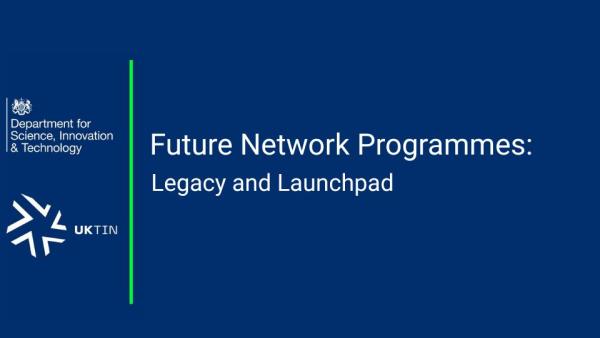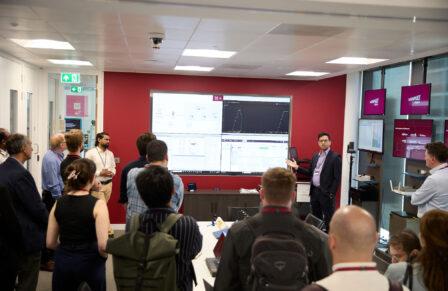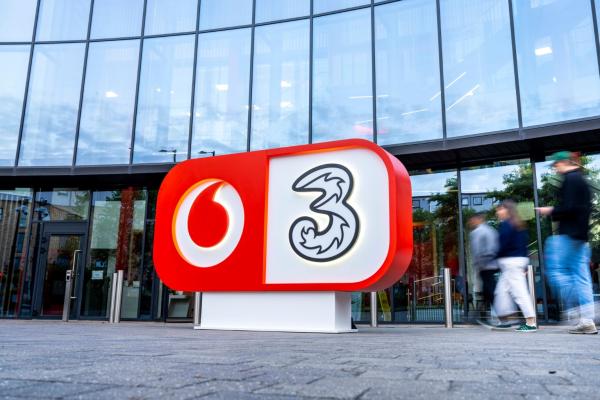
UKTIN hosted The Role of Connectivity in Transforming the UK at the Royal College of Physicians on Tuesday the 28th of January, focusing on how adopting wireless solutions can transform industries and public services, driving local growth.
This event shined a light on the current state of the adoption of advanced communication technologies in the UK including the solutions available from industry, the role of local authorities in transforming connectivity, and what needs to be done to further the sectors of transport and logistics, health and social care, manufacturing and agriculture and tourism. Delegates had the opportunity to hear from telco leaders, local authorities and sector specialists.
Ian Smith, Head of UKTIN opened the event by describing UKTIN as a network that “brings the government and industry together”, thanks to DSIT. He continued: “I encourage you to fully immerse yourself and connect – or reconnect – with those around you. As Steve Jobs once said, ‘Technology is nothing’. What is important is that you have faith in people. The adoption of new technologies requires a willingness to change.”
Keith Bullock, DSIT's Future Network Programmes Director emphasised the importance of articulating the business case and adopting at scale. He said, “We should be talking about today's technologies. There’s a lot we can do today. ‘Growth’ and ‘fiscal’ are constantly coming up in Whitehall at the moment and to have more money, we need to be clear about where we are heading.”
Current State of Play: The view from connectivity solutions providers
Led by Paul Clegg of DSIT, experts highlighted the importance of supply, mutual understanding and building trust.
Ghada Botros, Public Sector Divisional Head, Vodafone said: “Connectivity is our main asset, our main offering. But on top of that, we need customised solutions. It is not one size fits all. What are your challenges? What are your needs? Let’s design solutions that facilitate the appropriate outcome. We’ve shown that 5G can save the NHS at least one billion per year while smart lighting can save local councils five million over five years, and one million in CO2 emissions. A good relationship between the private and public sectors is crucial. There has been great progress on this thanks to DSIT and UKTIN. For example, we are involved with five out of the ten innovation regions. We have deployed the first 5G standalone in Coventry and provided connectivity for more than 3,000 staff in the council. However, this is just the beginning of the smart city.”
Marcus Dorling, Client Director, Public Sector, Bodlyn Networks, added: “We all have the technology, but the technology is just one part of the solution. We need to use these innovative technologies in other businesses, for other projects. A key part of this is investment. We are lucky enough to be backed at the moment but have spent more money on our TfL projects than we received. You might be surprised by that. We want to interact with the government more to commercialise their technology – the UK has extensive 5G networks. We want to connect the government with hyperscalers in London, enabling councils to create smart cities. This is about giving people access, addressing social issues and attracting foreign investment.”
Chris Keone, Director, BT contributed: “This isn’t about the personal validation of technologies, but business cases. That’s what we are trying to accelerate. And it’s got to start with the customer, demystifying the experience and focusing on the outcomes. We’ve learned a lot from the 5G Testbed and Trials Programme – broadly around three-quarters of those investing in 5G are seeing a return within a year. We just completed a trial in Belfast, where people were struggling to pay for their pints of beer and we provided reliable connectivity, which was transformational for the customer. That is the beauty of the 5G standalone network. People start with a problem and it’s up to us to offer a solution.”
The UK’s key sectors share their lessons learned:
- Build on the work and successes of other projects
- Focus on the social aspect of 5G: How does the technology improve the lives of residents, workers and patients?
- Importance of digital inclusion, facilitating cultural change and hosting feedback sessions
- See 5G as a means to freedom and independence
- The telecoms industry needs to attract the right skills, and the lack of education about the sector and 5G is a problem
- 5G has huge cost benefits across all sectors
- Share knowledge
The role of connectivity in digitalising public services for growth
Chaired by Robert Franks, WM5G, the panel discussed what local authorities need to do and how connectivity can support their objectives
Barry McNally of Smart and Connected Social Places, Glasgow, said: “In Glasgow, our 5GIR project is about transforming social housing and health and social care. Our city has one of Europe’s largest social housing portfolios. There is a significant overlap of services and local authorities are spending more and more to just stand still. The current process is significantly manual and it is not sustainable. We are looking at developing three use cases, using the same solution.”
James Noakes, Belfast City Council said: “Local authorities have changed a lot in recent years but sometimes the challenge is keeping up with change. We need to demonstrate use cases that view connectivity as a utility again, not a product. We need to build momentum. No one wants connectivity. They want the things that connectivity enables us to do.”
Chris Founds, CJ Founds Associates said: “Our 5GIR Manchester programme focuses on social homes and decarbonisation. The project is centred on making 1,800 social homes smart, using preventative and predictive maintenance. Now, how do we stack our use cases? One smart device can change social homes across the UK’s city regions, but we need to share learnings.”
Smith concluded by saying the day’s keyword was “collaboration”. The event closed with a networking session, where attendees shared thoughts and ideas with their peers.
The full event recording can be viewed here.









